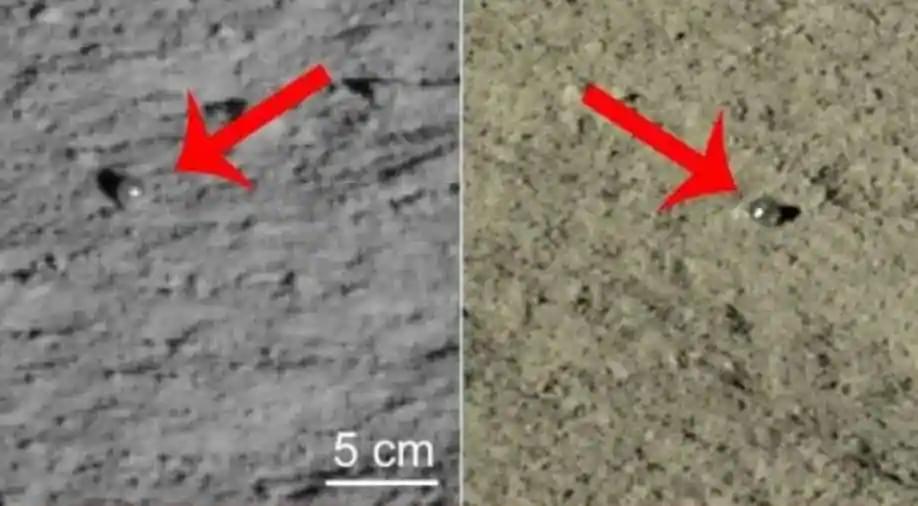Strikes on Ukrainian positions have been reported following Russian President Vladimir Putin’s order of a military operation.



Chinese rover Yutu-2 has discovered mysterious glass spheres on the far side of the moon. The paper detailing the discovery has been published in Science Bulletin.
“Collectively, the peculiar morphology, geometry, and local context of the glass globules are consistent with being anorthositic impact glasses,” the researchers write in their paper.
Also read | Astronomers resolve mystery of ‘cube’ spotted on Moon’s dark side.

Elon Musk’s back at it again, folks — and this time, his attorney is accusing the federal government of leaking.
Following up on his claim that the Securities and Exchange Commission was trying to harass him into silence, Musk’s attorney accused the commission of “leaking certain information” in an ongoing retaliation campaign against the Tesla and SpaceX CEO.
This alleged campaign supposedly began back in 2018, when the SEC investigated Musk for tweeting about selling Tesla stock at $420 a share and taking the company private, eventually charging him with misleading investors. Though that case was settled in 2018 after Musk and Tesla paid $20 million each in fines, new reporting about the commission subpoenaing the CEO in recent months has reignited the debacle.

Imagine a field of wheat that extends to the horizon, being grown for flour that will be made into bread to feed cities’ worth of people. Imagine that all authority for tilling, planting, fertilizing, monitoring and harvesting this field has been delegated to artificial intelligence: algorithms that control drip-irrigation systems, self-driving tractors and combine harvesters, clever enough to respond to the weather and the exact needs of the crop. Then imagine a hacker messes things up.

Imagine a field of wheat that extends to the horizon, being grown for flour that will be made into bread to feed cities’ worth of people. Imagine that all authority for tilling, planting, fertilizing, monitoring and harvesting this field has been delegated to artificial intelligence: algorithms that control drip-irrigation systems, self-driving tractors and combine harvesters, clever enough to respond to the weather and the exact needs of the crop. Then imagine a hacker messes things up.
A new risk analysis, published today in the journal Nature Machine Intelligence, warns that the future use of artificial intelligence in agriculture comes with substantial potential risks for farms, farmers and food security that are poorly understood and under-appreciated.
“The idea of intelligent machines running farms is not science fiction. Large companies are already pioneering the next generation of autonomous ag-bots and decision support systems that will replace humans in the field,” said Dr. Asaf Tzachor in the University of Cambridge’s Center for the Study of Existential Risk (CSER), first author of the paper.



More recently, digital twins have been the focus of a European Union-funded project that seeks to clone a patient’s entire brain. Dubbed Neurotwin, the research project aims to create virtual models that can be used to predict the effects of stimulation for the treatment of neurological disorders—including epilepsy and Alzheimer’s disease. When it comes to epilepsy, non-invasive stimulations (where electrical currents are painlessly delivered to the brain) have proven effective in tackling seizures. Given how drugs don’t help a third of epilepsy patients, the technology is coveted yet needs refinement. This is where virtual clones come in.
“The digital avatar is essentially a mathematical model running on a computer,” Giulio Ruffini, coordinator of the Neurotwin project, told WIRED. Including a network of embedded “neural mass models,” the technology hopes to create a map of the neural connections in the brain—a concept termed as the ‘connectome’. “In the case of epilepsy, some areas of the connectome could become overexcited,” the outlet mentioned. “In the case of, say, stroke, the connectome might be altered.” Once the digital clone has been created by the team, with about half an hour-worth of magnetic resonance imaging (MRI) data and ten minutes of electroencephalography (EEG) readings to capture electrical activities and realistically simulate the brain’s main tissues (including the scalp, skull, cerebrospinal fluid, and grey and white matter), it can then be used to optimise stimulation of the real patient’s brain.
According to Ruffini, this is possible “because we can run endless simulations on the computer until we find what we need. It is, in this sense, like a weather forecasting computational model.”
No he does not respond to the resveratrol challenges. Important here are the chapters concerning Resetting the Ageing Clock and Repeatable Ageing Reversal.
In the final episode of this season, Dr. David Sinclair and Matthew LaPlante focus on current and near-future technologies relevant to health and aging. In addition to discussing the utility of wearable sensors and biological age measurements, they highlight innovative research aimed at reversing biological age. The societal effects of therapies that successfully extend healthspan and/or lifespan are also considered.
#DavidSinclair #Longevity #Aging.
Thank you to our sponsors:
Levels — https://levels.link/sinclair.
Athletic Greens — https://athleticgreens.com/sinclair.
InsideTracker — https://insidetracker.com/sinclair.
Our Patreon page: